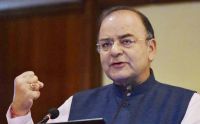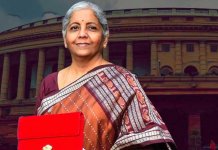
The budget presented by Finance Minister Arun Jaitely in the background of demonetisation and the shift towards a digital economy wonderfully combines several beautiful measures. Budgets’ slogan – the TEC or “Transform, Energise and Clean India”, is well reflected in the initiatives and allocations announced in the budget. Extending from the restriction of Rs 3 lakh on physical transaction of money to galloping MGNREGA allocation to Rs 48000 crore, a dedicated programme for the safety of Railway passengers, partnering digital India steps to ‘clean India’, doubling Mudra scheme allocation, a resolution regime for financial institutions, etc. the budget addresses the current economic problems well. Following are the hit steps of this budget.
1. Limit on physical money transaction to Rs 3 lakh: The budget directly makes a punch on cashless economy at the same time, complying the citizens to pay digitally so that their transactions are recorded and accounted. This step will inarguably revolutionize digital payments besides adding accountability to transactions. Finance Minister has created a smart supplement to the demonetisation attempt which policy makers were expecting. The pains of demonetisation will be rewarding only if such supportive steps are made.
2. Enhancing the allocation of MGNREGA to Rs 48000 crore: total unexpected step in a year of fiscal tightness. Compare this to the last year allocation of Rs 38500 crore. The pilot scheme of the UPA government named after the Father of Nation gets additional Rs 9500 crore. Government is making remarkable effort here to make its programmes inclusive as the MGNREGA still remains a welfare and social development programme more than an economic development programme. Nearly 10 lakh farm ponds and an equal number of compost pits are to be constructed using the allocated Rs 48000 crore.
3. Digital economy is the star of the budget: Digital economy is one of the ten distinct themes of the Budget. Budgets’ slogan – the TEC or “Transform, Energise and Clean India”, can be realized only if digital economy steps are taken to ‘clean India’. Digital economy related steps are taken on several fronts- government service delivery, fighting black money, providing skills to the youth etc. The Finance Minister mentioned that speed, accountability and transparency will be created by utilizing the opportunities of digital economy.
Here, Finance Minister announced two beautiful steps. First is launching of two BHIM versions- the Referral Bonus Scheme for individuals and a Cashback Scheme for Merchants. Second one is the Aadhaar Pay scheme for merchants to be designed like the exisiting Aahdhar Enabled Payment System.
Finance Minister dreams to achieve 2500 crore digital transactions during 2017-18. Another target is achieving 20 lakh Aadhar based PoS by September 2017.
Besides these, payment enhancement steps, the Finance Minister also announced amendment to the existing payment and settlement legislation the Payment and Settlement System (PSS) Act 2007. All the current payment infrastructure including the Aadhar based payment systems and the Prepaid Payment Instruments are regulated by the PSS Act. Amendment to the Act implies that the government is trying for innovations on digital payment front.
4. Doubling of allocation to Mudra Yojana: The Finance Minister has doubled loan target under the Mudra Yojana from 1.22 lakh crore to Rs 2.44 lakh crore in the next fiscal. The scheme has already emerged as the big self-employment and entrepreneurial development programme in the country and became a mass movement.
5. Resolution regime for Financial Institutions: Financial institutions are very unique and sensitive entities unlike manufacturing firms. Their closure or restructuring can’t be done with the existing Bankruptcy Code. For this, the budget announced the creation of a separate resolution regime or a financial bankruptcy code in the coming fiscal.
6. Utilization of the Escape clause provided by the FRBM Committee: Finance Minister targets that fiscal deficit will be brought down to 3 percent of the GDP during 2018-19. For the budget estimate, the Finance Minister targets an FD of 3.2%. Here, the FM has utilized escape clause provided by NK Singh Committee. The escape clause allows 0.5% adjustment in FD during emergency conditions.
7. Skill Development is the theme of this decade and the budget brings a bunch of steps including the Sankalp, STRIVE, besides enhancing allocations to PMKK and SWAYAM. SANKALP will provide market relevant training to 3.5 crore youth.
Strengthening for Industrial Value Enhancement (STRIVE) will be launched in 2017-18 with a cost of Rs 2,200 crores. It will focus on improving the quality and market relevance of vocational training provided in ITIs and strengthen the apprenticeship programmes through industry cluster approach.
8. Reform in higher education: the higher education sector this year doesn’t gets much money. But gets adequate reform attention. The FM anncounced that UGC will be provided with more power for accreditation and other performance raising activities for higher education sector. A National Testing Agency will be created to conduct eligibility tests.
Another initiative is to step up online education through SWAYAM platform and at least 350 online courses will be provided through it.
9. This is the first time that the Railway budget is integrated into the general budget. Taking the opportunity, the FM announced an initiative – Rashtriya Rail Sanraksha Kosh to enhance passenger safety. It will be created with a corpus of Rs 1 lakh crores over a period of 5 years.











